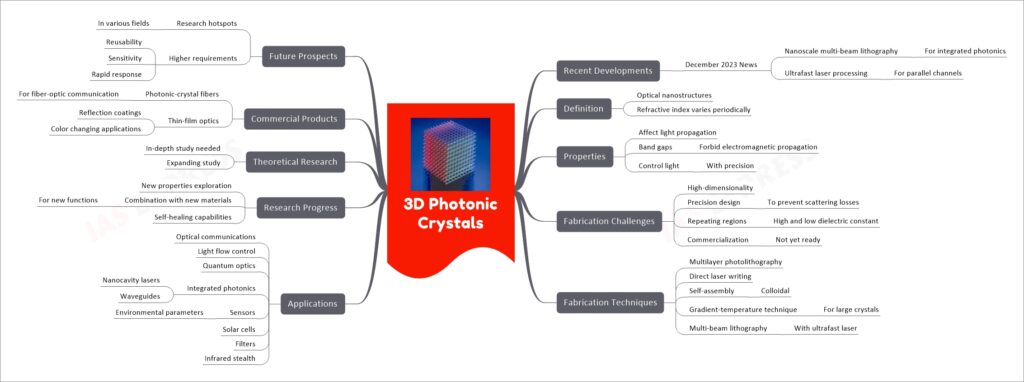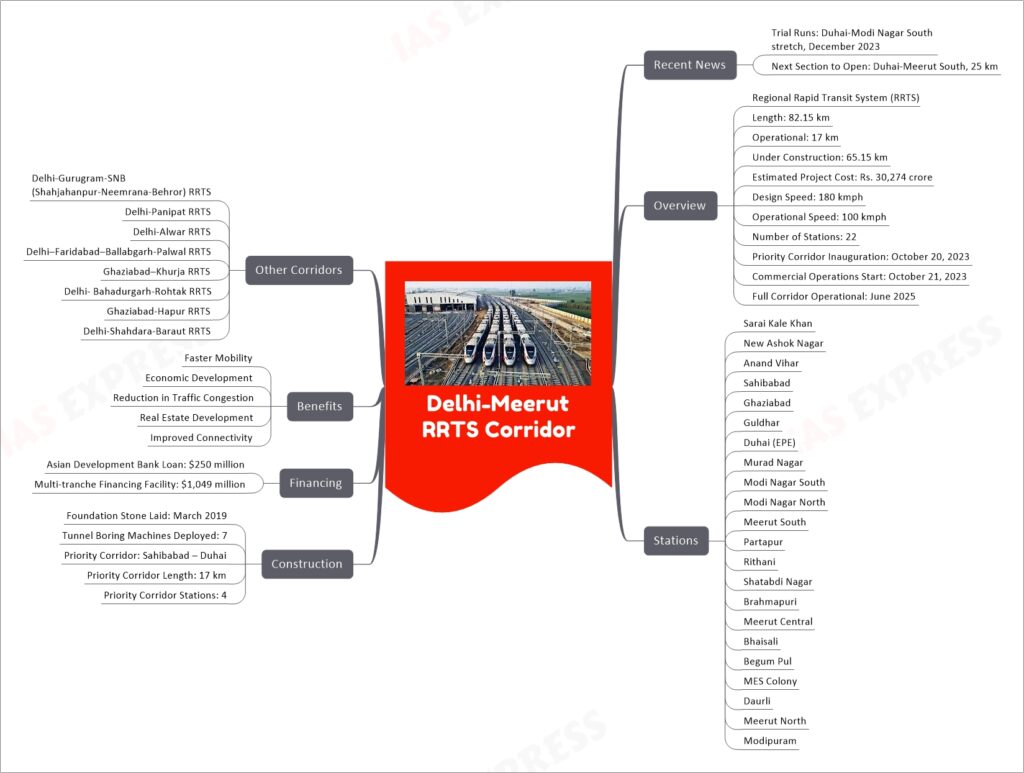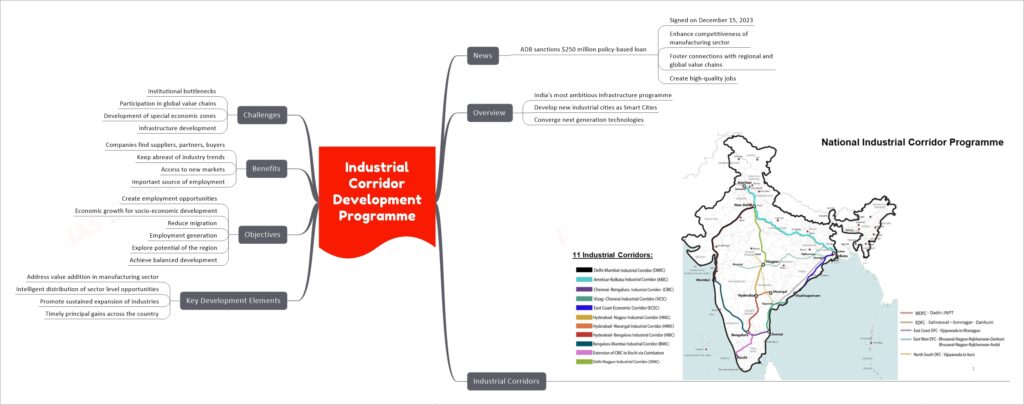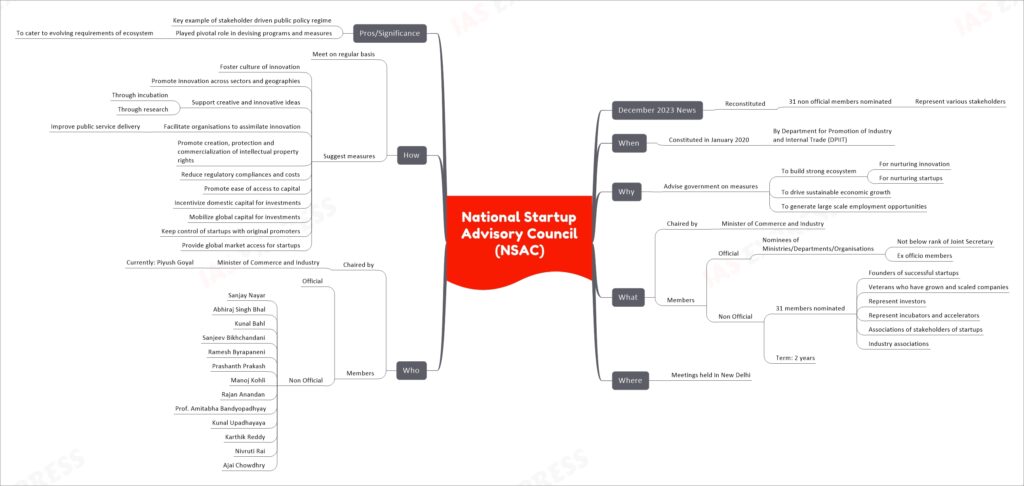[Newsbits] 19.12.2023 – National Startup Advisory Council, Telecommunications Bill & more

The National Geoscience Data Repository (NGDR) is a comprehensive online platform set to launch on 19th December 2023 in New Delhi. It is designed for accessing, sharing, and analyzing geospatial information across the nation. The initiative, spearheaded by the Geological Survey of India (GSI) and Bhaskarachaya Institute of Space Applications and Geoinformatics (BISAG-N), aims to democratize critical geoscience data. The NGDR project, conceptualized by the Ministry of Mines (MoM) as part of the National Mineral Exploration Policy (NMEP) 2016, envisions a comprehensive, multi-purpose program. The project aims to collate all baselines and mineral exploration information on a common geospatial platform, making it publicly available. This initiative marks the first step towards the establishment of a centralized exploration data repository.
3D photonic crystals are optical nanostructures with a periodically varying refractive index, which affects the propagation of light by creating band gaps that forbid electromagnetic propagation. The precision required in their design to prevent scattering losses and the need for repeating regions of high and low dielectric constant make their fabrication challenging. Techniques such as multilayer photolithography, direct laser writing, self-assembly, and multi-beam lithography with ultrafast lasers are used in their fabrication. Applications of 3D photonic crystals span across optical communications, light flow control, quantum optics, and integrated photonics, including nanocavity lasers and waveguides. They are also used in sensors, solar cells, filters, and infrared stealth technologies. Theoretical research is necessary for an in-depth understanding and exploration of new properties, and the combination with new materials may lead to new functions. While photonic-crystal fibers and thin-film optics are already in commercial use, the full potential of 3D photonic crystals is yet to be realized. Recent developments in December 2023 include advances in nanoscale multi-beam lithography for integrated photonics and ultrafast laser processing for creating parallel channels. The future prospects of 3D photonic crystals lie in becoming research hotspots with higher requirements for reusability, sensitivity, and rapid response in various fields.
The Delhi-Meerut Regional Rapid Transit System (RRTS) Corridor is an 82.15 km semi-high speed rail line that connects Delhi, Ghaziabad, and Meerut. The corridor, which began commercial operations on October 21, 2023, aims to provide a faster, more efficient mode of transportation, reducing travel time and congestion. The project, financed in part by a $250 million loan from the Asian Development Bank, is expected to stimulate economic growth, improve connectivity, and boost real estate development in the region. As of December 2023, trial runs have begun on the Duhai-Modi Nagar South stretch, with the next section, Duhai-Meerut South, set to open soon. The entire corridor is expected to be fully operational by June 2025.
The National Industrial Corridor Development Programme (NICDP) of India is a comprehensive initiative designed to create new industrial cities equipped with smart technologies and infrastructure. The programme includes multiple corridors like the Delhi-Mumbai and Chennai-Bengaluru corridors, each with its own transportation backbone. It aims to add value to the manufacturing sector, distribute opportunities across sectors, and promote industrial expansion. The recent $250 million loan from the Asian Development Bank is set to enhance the competitiveness of the manufacturing sector and create quality jobs. The programme’s objectives are to create employment, stimulate economic growth, and achieve balanced regional development. Benefits include better industry connections and job creation, while challenges involve overcoming institutional and infrastructure bottlenecks and integrating with global value chains.
The National Startup Advisory Council (NSAC) was constituted by the Department for Promotion of Industry and Internal Trade in January 2020 to advise the government on building a robust ecosystem for nurturing innovation and startups. It is chaired by the Minister of Commerce and Industry and has official as well as 31 non-official members representing diverse stakeholders. Recently, NSAC was reconstituted by nominating new non-official members for a 2-year term. It plays a pivotal role through regular meetings in suggesting measures to promote innovation, reduce costs and regulations, facilitate access to capital and global markets for startups. The upcoming 8th NSAC meeting will set the agenda for further expansion of the startup ecosystem.
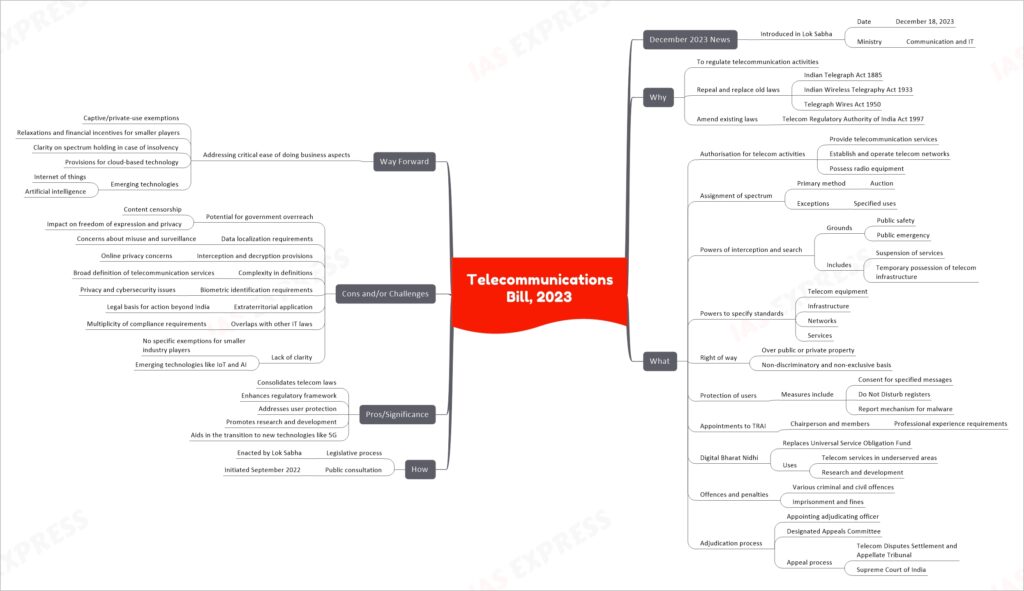
Summary: The Telecommunications Bill, 2023, introduced in India’s Lok Sabha, is a significant legislative overhaul aimed at modernizing the country’s telecommunications framework. It seeks to replace outdated laws like the Indian Telegraph Act, 1885, with a more current regulatory structure. Key features include mandatory authorizations for telecom activities, spectrum allocation mainly through auctions, and strengthened government powers for overseeing telecommunication operations. The bill emphasizes user protection and introduces the ‘Digital Bharat Nidhi’ to foster telecom advancements, especially in underserved areas. However, it faces criticism for potential government overreach, privacy infringements, and ambiguities in its broad definitions, such as those encompassing telecommunication services. The bill’s implementation will necessitate careful consideration of these challenges, ensuring that it supports industry growth while safeguarding user rights and privacy. Its success hinges on striking a balance between regulatory needs and fostering a conducive environment for technological advancements in the telecom sector.

